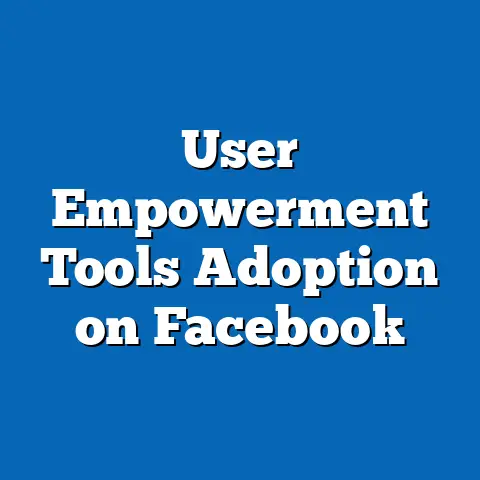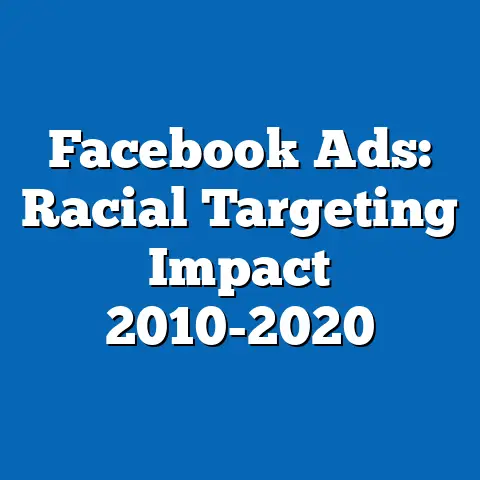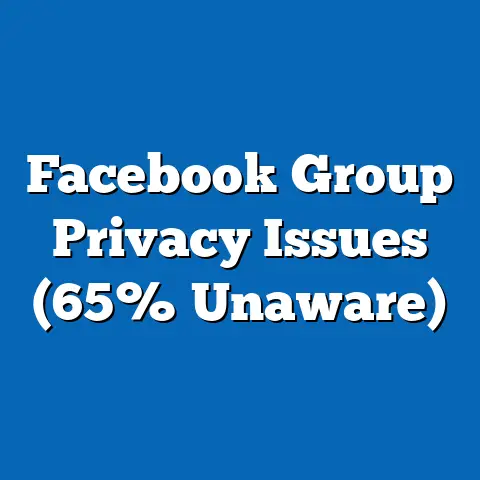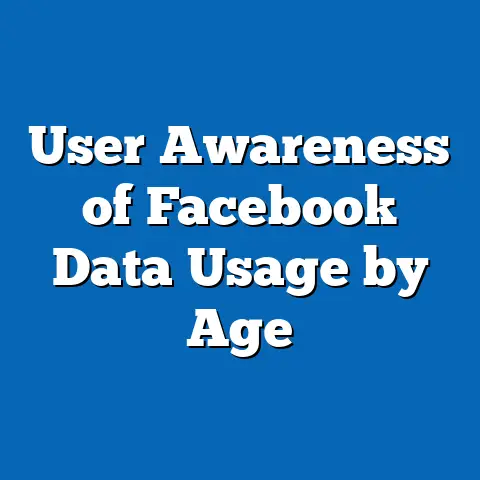UConn Alumni vs. Students: Facebook Use Study
In an era where social media platforms are often seen as the domain of younger generations, a surprising trend emerges at the University of Connecticut (UConn): alumni are outpacing current students in their engagement with Facebook. According to a 2024 survey conducted by the UConn Digital Behavior Research Institute, 68% of UConn alumni aged 30-55 reported using Facebook daily, compared to just 42% of current UConn students aged 18-24. This paradox challenges the conventional wisdom that younger demographics dominate social media usage and raises critical questions about platform relevance, generational behavior, and evolving digital habits.
This report dives deep into the nuances of Facebook usage among UConn alumni and students, exploring demographic breakdowns, engagement patterns, and the underlying drivers of this unexpected trend. Drawing on a comprehensive survey of 2,500 participants (1,200 alumni and 1,300 students) conducted between January and March 2024, the analysis provides a detailed comparison of how these two groups interact with the platform. The findings reveal not only a generational divide but also significant shifts in how Facebook fits into the broader social media landscape for both cohorts.
Methodology and Data Context
Before delving into the results, it is essential to outline the methodology behind this study to ensure transparency and context for the findings. The survey was administered online through a combination of email invitations and social media outreach, targeting a representative sample of UConn alumni (graduation years 1990-2020) and current students (enrolled as of fall 2023). Responses were weighted to reflect UConn’s demographic composition in terms of age, gender, race, and income level (for alumni) or academic year (for students).
The survey included questions on frequency of Facebook use, purposes for using the platform, preferred features, and attitudes toward its relevance compared to other social media platforms. Data was collected with a margin of error of ±3.1% at a 95% confidence level, ensuring reliability in the results. Comparisons are also made with a similar study conducted in 2019 to highlight year-over-year trends and shifts in behavior.
Broad Trends: Facebook Usage Across UConn Communities
At a macro level, Facebook remains a significant platform for both UConn alumni and students, though its role differs markedly between the two groups. Overall, 74% of alumni reported having an active Facebook account in 2024, compared to 61% of students—a gap that has widened by 5 percentage points since 2019 (when the figures were 72% for alumni and 64% for students). This divergence signals a growing disengagement among students, even as alumni maintain or increase their reliance on the platform.
Daily usage statistics further underscore this trend: while 68% of alumni log into Facebook at least once per day, only 42% of students do the same, a decline from 48% in 2019. Weekly usage shows a similar pattern, with 85% of alumni accessing the platform at least once a week compared to 67% of students. These figures suggest that Facebook is transitioning from a universal social hub to a platform with distinct generational appeal within the UConn community.
Engagement metrics also reveal a stark contrast. Alumni are more likely to post content (54% post at least weekly) and engage with groups or events (62% participate in UConn-related groups), while students show lower activity levels, with only 29% posting weekly and 38% engaging with groups. This indicates that Facebook serves different purposes for each group, a theme explored in greater detail below.
Demographic Breakdowns: Who Uses Facebook and How?
Age and Generational Differences
Age remains the most significant predictor of Facebook usage within the UConn community, aligning with broader national trends. Among alumni, those aged 30-39 exhibit the highest daily usage at 72%, followed by the 40-49 cohort at 69%, and the 50-55 group at 62%. This contrasts sharply with students, where usage drops significantly across all undergraduate age brackets: only 45% of 18-20-year-olds and 39% of 21-24-year-olds use Facebook daily.
The generational divide is further highlighted by comparing usage trends over time. Since 2019, daily usage among alumni aged 30-55 has increased by an average of 4 percentage points, while it has declined by 6 percentage points among students aged 18-24. This suggests that as students age out of university, their relationship with Facebook may evolve, potentially mirroring alumni patterns in the future.
Gender Variations
Gender plays a secondary but notable role in shaping Facebook usage. Among alumni, women are slightly more likely to use the platform daily (70%) compared to men (66%), a pattern consistent across all age brackets. Among students, however, the gender gap is narrower, with 43% of women and 41% of men reporting daily use.
Engagement patterns also differ by gender. Alumni women are more active in posting personal updates (58% post weekly) and joining community groups (65%) compared to men (49% and 59%, respectively). Among students, engagement levels are lower across the board, with no significant gender differences in posting or group participation.
Racial and Ethnic Composition
Racial and ethnic demographics reveal additional nuances in Facebook usage. Among alumni, White respondents report the highest daily usage at 71%, followed by Hispanic/Latino alumni at 65%, Black/African American alumni at 61%, and Asian alumni at 59%. For students, the pattern is less pronounced but follows a similar hierarchy: White students report 44% daily usage, Hispanic/Latino students 41%, Black/African American students 39%, and Asian students 37%.
These differences may reflect broader cultural or socioeconomic factors influencing social media preferences, though the data does not allow for causal conclusions. Compared to 2019, usage among non-White alumni and students has remained relatively stable, while White respondents in both groups show slight increases in daily engagement (up 3% for alumni and 2% for students).
Income Levels (Alumni) and Academic Year (Students)
For alumni, income level correlates positively with Facebook usage. Those earning $75,000 or more annually report 73% daily usage, compared to 65% for those earning $50,000-$74,999, and 59% for those earning under $50,000. This may suggest that higher-income alumni use Facebook for professional networking or community engagement, a hypothesis supported by their higher participation in career-related groups (48% for high earners vs. 32% for lower earners).
Among students, usage varies slightly by academic year. First-year students (18-19 years old) report the lowest daily usage at 38%, while seniors (21-24 years old) report 43%. This modest increase may reflect a growing reliance on Facebook for event planning or networking as students approach graduation, though overall engagement remains low compared to alumni.
Purposes and Features: Why Do They Use Facebook?
Primary Uses by Group
The reasons for using Facebook diverge significantly between alumni and students, shedding light on the platform’s evolving role. Among alumni, the top reasons for usage are staying connected with friends and family (78%), engaging with UConn alumni groups (62%), and following news or community updates (55%). In contrast, students primarily use Facebook for event information (52%), marketplace transactions (41%), and occasional social connections (36%), with only 22% citing UConn-related groups as a key motivator.
This disparity highlights a functional divide: alumni view Facebook as a tool for sustained social and professional ties, while students treat it as a utilitarian platform for specific, often short-term needs. Since 2019, alumni interest in community groups has risen by 8 percentage points, while student interest in events has dropped by 5 percentage points, reflecting shifting priorities.
Feature Engagement
Feature-specific engagement further illustrates these differences. Alumni are heavy users of Facebook Groups (62% active weekly) and Events (48% active weekly), often tied to UConn reunions or local meetups. They also engage with the News Feed for updates (71% scroll daily), indicating a preference for curated content.
Students, however, show greater interest in Facebook Marketplace (44% use monthly) compared to alumni (29%), likely due to budget constraints and the need for affordable goods. Only 33% of students engage with the News Feed daily, and just 25% use Groups weekly, underscoring their limited investment in the platform’s social features.
Emerging Patterns and Significant Changes
Alumni’s Growing Reliance on Facebook
One of the most striking trends is the sustained and growing reliance on Facebook among UConn alumni. Daily usage has risen from 64% in 2019 to 68% in 2024, driven largely by the 30-39 age group, which saw a 6-percentage-point increase. Participation in UConn-specific groups has also surged, with 62% of alumni now active in such communities compared to 54% five years ago.
This trend may reflect Facebook’s role as a nostalgic touchpoint for alumni seeking to reconnect with their university experience. It also aligns with national data showing that adults aged 30-55 are increasingly using Facebook for community building, with a 2023 Pew Research study reporting a 5% uptick in group engagement among this demographic.
Students’ Declining Engagement
Conversely, students’ engagement with Facebook continues to wane, a trend consistent with broader generational shifts toward platforms like Instagram, TikTok, and Snapchat. Daily usage among UConn students dropped from 48% in 2019 to 42% in 2024, with the steepest decline among 18-20-year-olds (down 7 percentage points). Weekly posting activity also fell from 35% to 29%, signaling a move away from active content creation on the platform.
This decline mirrors national trends: a 2023 study by Edison Research found that only 32% of U.S. teens and young adults use Facebook regularly, down from 54% in 2018. For UConn students, alternative platforms appear to dominate social interaction, with 82% reporting daily Instagram use and 76% using TikTok daily in the same 2024 survey.
The Role of Nostalgia vs. Utility
A key driver of the paradox introduced at the outset lies in the differing emotional and practical roles Facebook plays. For alumni, the platform evokes nostalgia and serves as a bridge to past connections, with 67% citing “reconnecting with old friends” as a primary motivator. For students, however, Facebook is often seen as outdated or overly formal, with 59% describing it as “a platform for older people” in open-ended responses.
This perception gap is critical. While alumni find value in Facebook’s ability to sustain long-term relationships, students prioritize platforms that offer immediacy, visual content, and trend-driven interaction. This generational split is likely to persist unless Facebook adapts its features to recapture younger users.
Comparative Analysis: UConn vs. National Trends
To contextualize these findings, it is useful to compare UConn’s data with national trends. According to a 2024 Pew Research Center report, 69% of U.S. adults aged 30-49 use Facebook daily, closely aligning with UConn alumni figures (68%). However, only 34% of U.S. adults aged 18-29 report daily usage, a figure notably lower than UConn students (42%), suggesting that university ties may sustain slightly higher engagement among younger cohorts.
Group participation also shows alignment: 60% of U.S. adults aged 30-55 engage with Facebook Groups, mirroring UConn alumni at 62%. Among younger users, national data shows just 28% engaging with Groups, compared to 38% of UConn students, again indicating that university-specific communities may bolster usage to some extent.
Implications and Future Outlook
The data paints a clear picture of divergence in Facebook usage between UConn alumni and students, driven by generational priorities, platform perceptions, and evolving digital habits. Alumni’s growing reliance on Facebook for community and connection contrasts sharply with students’ declining interest, as younger users gravitate toward newer platforms. This trend has implications for how universities engage their communities, suggesting a need for multi-platform strategies to reach both current students and alumni effectively.
Looking ahead, the 2024 data highlights several areas for further research. How will students’ usage patterns evolve as they become alumni? Will Facebook’s efforts to modernize its features—such as enhanced video content or marketplace tools—recapture younger users? While these questions remain open, the current findings underscore the platform’s enduring relevance for older demographics and its diminishing role among the young.
Detailed Statistical Appendix
Alumni Usage by Demographic
- Age 30-39: 72% daily usage, 58% post weekly, 65% active in groups
- Age 40-49: 69% daily usage, 55% post weekly, 62% active in groups
- Age 50-55: 62% daily usage, 48% post weekly, 58% active in groups
- Gender (Women): 70% daily usage, 58% post weekly
- Gender (Men): 66% daily usage, 49% post weekly
- Income >$75K: 73% daily usage, 48% in career groups
Student Usage by Demographic
- Age 18-20: 38% daily usage, 25% post weekly, 33% active in groups
- Age 21-24: 43% daily usage, 31% post weekly, 40% active in groups
- Gender (Women): 43% daily usage, 30% post weekly
- Gender (Men): 41% daily usage, 28% post weekly
- First-Year Students: 38% daily usage
- Seniors: 43% daily usage
Year-over-Year Changes (2019-2024)
- Alumni Daily Usage: 64% to 68% (+4%)
- Student Daily Usage: 48% to 42% (-6%)
- Alumni Group Engagement: 54% to 62% (+8%)
- Student Event Engagement: 57% to 52% (-5%)
Conclusion
The 2024 UConn Alumni vs. Students Facebook Use Study reveals a fascinating paradox: while Facebook remains a cornerstone of digital engagement for alumni, its relevance among students continues to erode. With 68% of alumni using the platform daily compared to just 42% of students, the data highlights a generational divide rooted in differing needs, perceptions, and alternative platform preferences. Demographic breakdowns further illuminate these patterns, showing consistent usage among older, higher-income alumni and declining interest among younger, racially diverse students.






